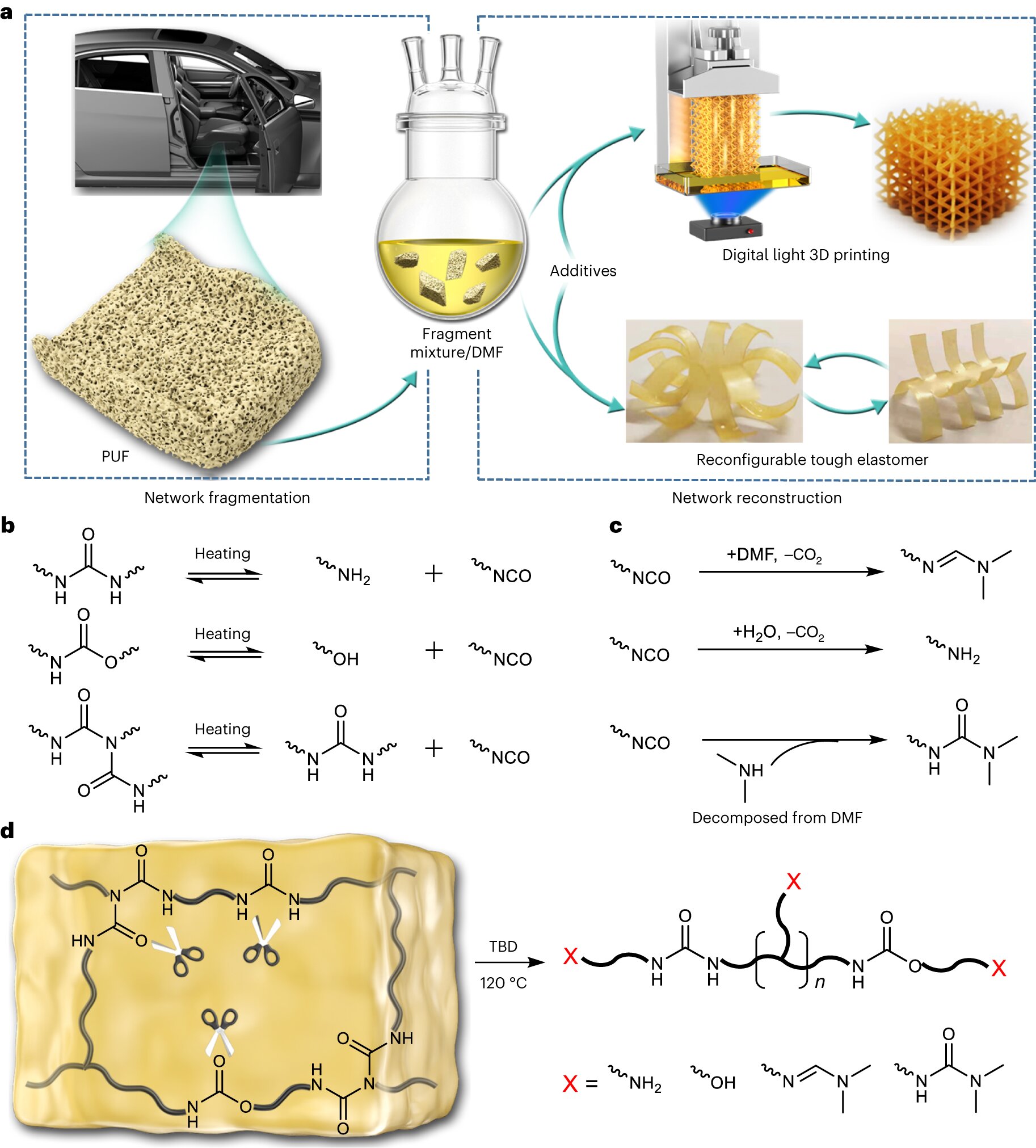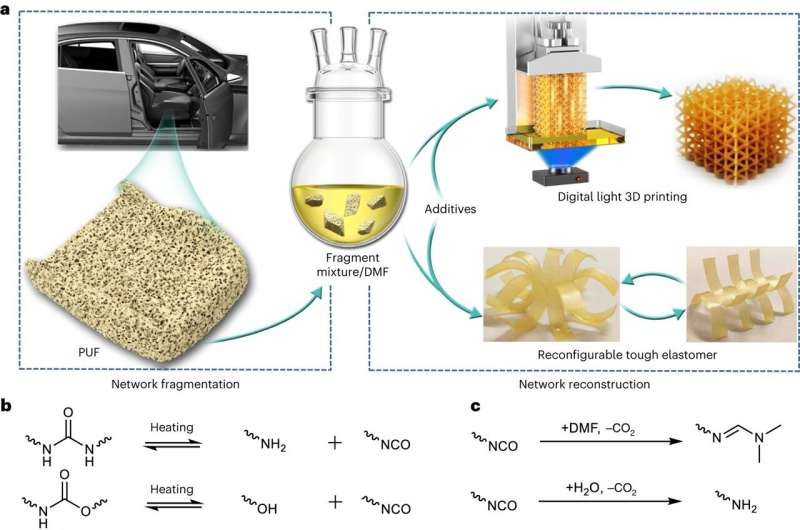

A team of chemical engineers at Zhejiang University, in China, has developed a way to convert polyurethane foams to 3D printing resins. In their paper published in the journal Nature Chemistry, the group describes their technique and possible ways the resins could be used.
Polyurethane foams (also known as foam rubber) of the types that are found inside of car seats, couches and mattresses are used to make products more comfortable. They are actually a type of plastic that is made to expand by forcing gas bubbles into mixtures using a blowing agent. Such foams are notoriously difficult to recycle because of the curing process that is used to make them.
Current approaches, as the researchers note, tend to be economically unattractive and also lead to the production of subpar byproducts. Because of that, most such products wind up in a landfill. In this new effort, the team in China has developed a novel approach to recycling such materials—one that they claim is both inexpensive and scalable. They describe it as an example of chemical upcycling, where typically discarded materials are converted to high-value products.
The new approach involves what the researchers describe as a fragmentation and reconstruction approach. It involves first grinding up the foam into tiny bits and then soaking them in dimethylformamide and an appropriate catalyst, depending on the type of foam being treated. The duration is also dependent on the particular material being treated. The resulting material is then used as a starter for reconstructing a new polymer network, which is accomplished via precuring and then post-curing. This converts the material into a double-network material that can be used as a 3D printing resin. It can also be fragmented chemically in the same way as the original foam.
The research team claims that their process could be used to reduce the environmental impact of polyurethane foams and also to bring down the cost of the original materials, in addition to serving as base material for printing 3D objects. They also suggest that their method could be adapted for use with other materials, such as polyesters and epoxies.
More information:
Zenghe Liu et al, Chemical upcycling of commodity thermoset polyurethane foams towards high-performance 3D photo-printing resins, Nature Chemistry (2023). DOI: 10.1038/s41557-023-01308-9
© 2023 Science X Network
Citation:
Converting polyurethane foams to 3D printing resins (2023, September 6)
retrieved 6 September 2023
from https://phys.org/news/2023-09-polyurethane-foams-3d-resins.html
This document is subject to copyright. Apart from any fair dealing for the purpose of private study or research, no
part may be reproduced without the written permission. The content is provided for information purposes only.